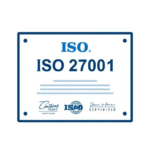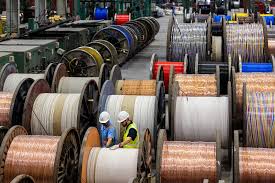What is an Eco-Label in the Context of Cables?
An eco-label is essentially a mark placed on a product’s packaging or literature that certifies it meets specific environmental or safety performance criteria. These can be:
- Mandatory Compliance Marks: Required by law to sell a product in a certain region (like the CE mark in Europe).
- Voluntary Certifications: Where a manufacturer willingly submits its product to be tested against a specific standard by a third-party organization to demonstrate superior performance.
- Self-Declared Claims: Claims made by the manufacturer itself about a product’s attributes (e.g., “contains recycled content”).
For end-users, labels verified by reputable third parties carry the most weight as they provide independent assurance of the claims being made.
Decoding the Most Common Labels & Claims on Cables
Let’s break down some of the acronyms and terms you’re most likely to encounter:
RoHS: The Hazardous Substance Watchdog
- What it means: Restriction of Hazardous Substances. Originating in the EU, this directive restricts the use of specific hazardous materials in electrical products. The list includes lead, mercury, cadmium, hexavalent chromium, and certain brominated flame retardants.
- What it means for you: A RoHS compliant label is a critical assurance that the cable is free from these harmful substances. This is important for human health (during handling and disposal) and for environmental protection, preventing these toxins from leaching into soil and water from e-waste. For companies operating in or exporting from India, RoHS compliance is often a key requirement for accessing global markets.
REACH: The Chemical Safety Regulation
- What it means: Registration, Evaluation, Authorisation and Restriction of Chemicals. Another EU regulation with global impact, REACH governs the use of chemical substances. It requires manufacturers to understand and manage the risks associated with the chemicals used in their products.
- What it means for you: While more complex than RoHS, a supplier’s declaration of REACH compliance indicates they are monitoring their supply chain for “Substances of Very High Concern” (SVHCs). It gives you confidence that the product is being produced with a high degree of chemical safety awareness.
LSZH / HFFR: The Fire Safety Indicator
- What it means: Low Smoke Zero Halogen / Halogen-Free Flame Retardant. This is not a formal certification mark itself, but a critical product characteristic often indicated on the cable.
- What it means for you: This is a crucial safety feature for cables used in enclosed public spaces (offices, tunnels, airports, hospitals). It means that in a fire, the cable will not release thick, toxic smoke or corrosive halogen gases, significantly improving visibility for evacuation and reducing harm to people and sensitive electronic equipment.
CE Mark: The European Market Passport
- What it means: Conformité Européenne (European Conformity). By affixing the CE mark, a manufacturer declares that the product meets all the relevant EU directives (which can include RoHS, the Low Voltage Directive, etc.).
- What it means for you: It’s primarily a mark indicating that the product can be legally sold within the European Economic Area. It signifies that the product meets essential health, safety, and environmental protection standards as defined by the EU.
Third-Party Certification Marks (UL, VDE, BASEC, etc.)
- What it means: These are marks from independent, third-party organizations that have tested and certified a product against their specific safety and performance standards. Examples include UL (Underwriters Laboratories) in North America, VDE in Germany, or BASEC in the UK.
- What it means for you: These voluntary marks are a powerful indicator of high quality and safety. They show that a manufacturer like one of the leading cable manufacturers in uae has gone the extra mile to have their product independently verified, providing a higher level of assurance than self-declaration alone.
Why Should the End User Care About These Labels?
As a buyer or specifier, paying attention to eco-labels is important for several reasons:
- Ensuring Legal Compliance: If you are incorporating cables into a product you intend to sell in Europe or other regulated markets, you must use RoHS and REACH compliant components.
- Meeting Project Specifications: Many modern construction projects, particularly “green building” schemes (like LEED or BREEAM), mandate the use of materials with certain environmental or safety characteristics, like LSZH cables or those with low volatile organic compound (VOC) emissions.
- Corporate Social Responsibility (CSR): Choosing products with positive environmental attributes demonstrates your organization’s commitment to sustainability, which is increasingly important to customers, investors, and employees.
- Worker and User Safety: Labels like RoHS and LSZH provide assurance that the product is safer for people to handle, install, and be around.
- Future-Proofing: Using compliant, modern materials helps future-proof your installation or product against upcoming regulations.
The Manufacturer’s Role: A Commitment to Transparency
Achieving these labels requires a significant commitment from manufacturers. It involves:
- Rigorous Supply Chain Management: Diligently tracking all materials and components, often requiring detailed declarations from suppliers like quality cable suppliers in uae.
- Investment in R&D: Developing new formulations and materials to replace restricted substances without compromising performance.
- Comprehensive Testing: Conducting extensive internal and third-party testing to verify compliance.
- Transparent Documentation: Maintaining detailed records and providing clear documentation (like Declarations of Conformity) to customers.
Conclusion: Making Informed, Responsible Choices
Eco-labels on cable products are far more than just symbols on a datasheet. They are a concise language communicating a product’s adherence to crucial safety, environmental, and quality standards. For the end-user, they provide a vital tool for navigating a complex market, enabling them to make informed decisions that ensure compliance, enhance safety, support sustainability goals, and ultimately, select higher-quality products. By understanding and demanding products with credible eco-labels, users play an active role in driving the entire cable industry towards a safer and more sustainable future.
Your Eco-Labeling Questions Answered (FAQs)
- If a cable is “Halogen-Free,” does that automatically mean it’s also flame-retardant?
Not necessarily, but in practice, they usually are. “Halogen-Free” simply means it doesn’t contain halogen elements (chlorine, fluorine, bromine, etc.). A “Low Smoke Zero Halogen” (LSZH) or “Halogen-Free Flame Retardant” (HFFR) cable is one that is both halogen-free and has special additives to make it flame-retardant. Always look for the explicit flame-retardant characteristic (LSZH/HFFR). - Does RoHS compliance mean a product is 100% free of hazardous substances?
RoHS restricts specific substances to very low, precisely defined maximum concentration values. So, for all practical purposes, it means the product is considered “free” of those particular harmful materials in any significant quantity. It does not cover all possible hazardous chemicals, which is where regulations like REACH come into play. - Are eco-labels mandatory in India?
India has its own set of environmental regulations, including E-Waste Management Rules that are conceptually similar to RoHS and WEEE. While not all international eco-labels are mandatory for products sold only within India, compliance with Indian standards is required. However, for Indian manufacturers exporting products, complying with international labels like RoHS and the CE mark is essential for market access. - How can I verify if a product’s eco-label claim is legitimate?
For mandatory marks like CE, the manufacturer should provide a Declaration of Conformity upon request. For voluntary third-party certifications like UL or VDE, you can often check the certification body’s public online database using the product’s model number or the certification file number printed on the label to verify its authenticity. - Does an eco-label say anything about the energy efficiency of the cable?
Typically, no. Most common eco-labels for cables (like RoHS, REACH, LSZH) are focused on material content, chemical safety, and fire performance. While the cable’s conductor size and material affect its energy efficiency (resistance losses), this is usually specified by its electrical characteristics, not a specific eco-label. Some broader “green building” product labels might consider the lifecycle energy impact, but this is less common for individual cables.
- Decoding Green Wires: What Eco-Labels on Cables Mean for You
- Understand what eco-labels like RoHS, REACH, and others on cable products signify for end-users, specifiers, and the environment in India and beyond.
- cable manufacturers in uae
Related posts:
 Discover the Best Fence Installation Services in Omaha with Huskins Services LLC
Discover the Best Fence Installation Services in Omaha with Huskins Services LLC
 ISO 27001 Training: A Real-World Lifeline to Reduce the Risk of Data Breaches
ISO 27001 Training: A Real-World Lifeline to Reduce the Risk of Data Breaches
 How Instagram Stories Help Businesses: A 2025 gerat Guide ..
How Instagram Stories Help Businesses: A 2025 gerat Guide ..
 “GV GALLERY® || TheGv Gallery Shop || Official Clothing Store “
“GV GALLERY® || TheGv Gallery Shop || Official Clothing Store “
 Don’t Miss Out on today’s Best Sale Offer with Huge Discounts!
Don’t Miss Out on today’s Best Sale Offer with Huge Discounts!
 Why Smart Entrepreneurs Trust a Certified Tax and Business Advisor Over DIY Tax Tools
Why Smart Entrepreneurs Trust a Certified Tax and Business Advisor Over DIY Tax Tools
 Web Design Agency Netherlands: Elevate Your Online Presence with Creative Excellence
Web Design Agency Netherlands: Elevate Your Online Presence with Creative Excellence
 Comprehensive Seed Industry Analysis: Trends & Market Insights
Comprehensive Seed Industry Analysis: Trends & Market Insights








